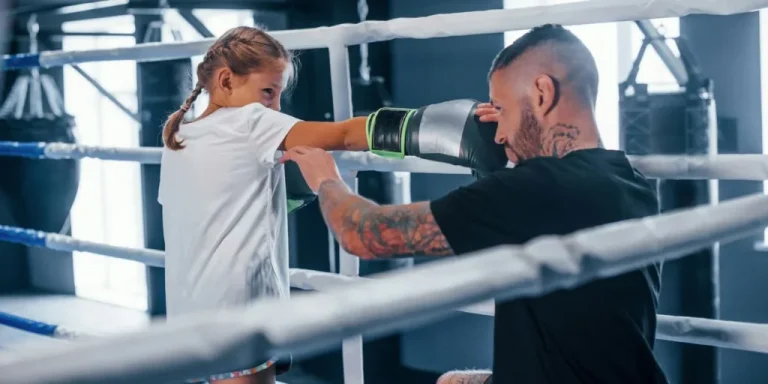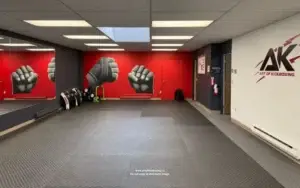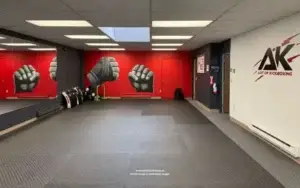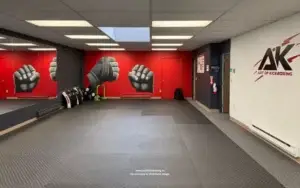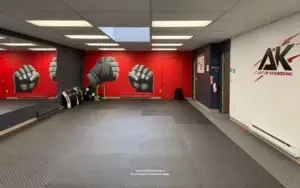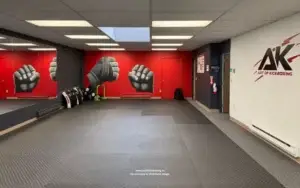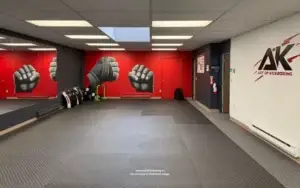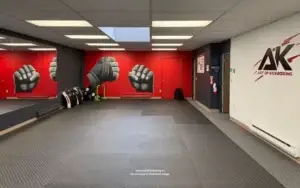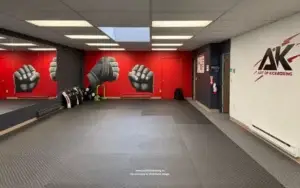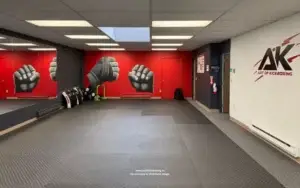Enrolling your children in martial arts classes is a decision that can increase physical activity, discipline, and self-confidence in a healthy way. However, choosing the right martial art for your child can be difficult given the many styles and options available when it comes to classes or personal training.
We have a strong emphasis on safety first at Art of Kickboxing. As such, this article aims to guide parents through selecting a suitable martial art for their children, focusing on the age to start, the criteria for selection, and recommendations on which martial arts to consider or reconsider.
- Starting Age and Criteria for Selection: The ideal starting age for martial arts is around 6-7 years old, with the selection criteria emphasizing both physical and mental benefits while considering the risks associated with each martial art.
- Recommended Martial Arts: Kickboxing (or Muay Thai) and Brazilian Jiu-Jitsu stand out for their emphasis on one-on-one engagement, offering significant benefits in terms of self-defense skills, confidence building, and character development through direct confrontation and practical problem-solving scenarios.
- Martial Arts to Reconsider: Karate, Wrestling, and Taekwondo may require careful reconsideration due to their focus on forms over direct confrontation, higher injury risks, and potential misalignment with personal goals and practical self-defense capabilities.
What Age Should Kids Start Martial Arts Classes?
The ideal age for children to begin martial arts training varies, but many instructors agree that starting at about 6 to 7 years old is beneficial. At this age, children have developed enough physical coordination and can follow instructions more effectively. However, some martial arts schools offer programs for younger children, focusing more on developing motor skills and basic martial arts values such as respect and discipline rather than complex techniques.
RELATED: How to Get into Mixed Martial Arts (MMA) in 5 Steps
How Do I Choose a Martial Arts Program for My Child?
When choosing a martial art for your child, consider both the physical and mental benefits. Martial arts that emphasize one-on-one confrontation, like Jiu-Jitsu or kickboxing, can be more beneficial than those based more on forms, such as Tai Chi. The direct engagement in arts like Jiu-Jitsu teaches children effective self-defense techniques, boosts their confidence, and enhances their ability to handle confrontations.
Yet, it’s crucial to weigh the risks. Certain martial arts, like wrestling, may pose a higher risk of injuries, including concussions and soft tissue damage, due to their intense physical engagement and takedowns. Therefore, understanding the physical demands and safety measures of each martial art is essential in making an informed decision.
2 Best Martial Arts for Children
As parents seek to empower their children with self-defense skills, physical fitness, and mental resilience, the choice of martial art becomes crucial. Among the myriad options, two stand out for their comprehensive approach to martial arts training: Kickboxing (or Muay Thai) and Brazilian Jiu-Jitsu.
These disciplines are distinguished not only by the martial arts skills they impart but also by their emphasis on life lessons, character development, and the ability to handle real-life situations.
In this section, we explore why Kickboxing or Muay Thai and Brazilian Jiu-Jitsu are considered the best martial arts for children, focusing on their balance of physical training, mental conditioning, and practical applicability in daily life and beyond.
RELATED: Is Kickboxing a Martial Art? Yes! Here’s Why
1. Kickboxing (or Muay Thai)
Kickboxing and Muay Thai offer excellent stand-up combat skills, making them ideal for self-defense. Martial arts class training in these two disciplines improves hand-eye coordination, mobility, footwork, and assertiveness.
For children, the focus is often on pad work rather than full contact, which safely builds their physical skills and confidence.
The one-on-one confrontation practiced during these pad drills instills a sense of careful consideration, responsibility, and discipline, valuable traits that transfer to many aspects of life.
2. Brazilian Jiu-Jitsu
Brazilian Jiu-Jitsu (BJJ) stands out as one of the safest and most effective martial arts for children. It emphasizes ground control and submission techniques, allowing a smaller practitioner to neutralize a larger opponent, which is a crucial self-defense skill.
BJJ’s training environment encourages physical fitness, problem-solving, and social interaction, contributing to a child’s overall character development. Its competitive aspect is safely managed, allowing children to engage in matches with safety gear and under strict supervision, minimizing the risk of injury.
RELATED: Are Kickboxing Classes Worth It?
3 Martial Arts for Children to Reconsider
When it comes to children’s martial arts programs, not every style may suit every child’s needs or contribute equally to their personal and physical development. Karate, with its focus on forms over direct confrontation, and Wrestling, known for its physical intensity and higher injury risk, prompt a careful reconsideration.
These disciplines, while offering valuable skills and life lessons, might not align with the goals of fostering safe, practical self-defense capabilities and nurturing a healthy lifestyle in young martial artists.
Parents seeking a martial arts program that balances skill development, safety, and positive reinforcement may need to weigh these factors heavily. Understanding the specific dynamics of Karate and Wrestling helps in making an informed choice that aligns with a child’s fitness level, problem-solving skills, and long-term personal goals in martial arts.
1. Karate
While karate is a respected discipline with a rich history, its focus on kata (forms) over kumite (sparring) in many classes may not provide the full benefits of martial arts training, particularly in self-defense scenarios.
The lack of consistent person-to-person confrontation means children might not develop the practical self-defense skills or the confidence to handle real-life conflicts effectively.
2. Wrestling
Wrestling is invaluable for its emphasis on grappling, strength, and endurance, teaching children how to control an opponent physically.
However, the nature of wrestling, with its intense physical engagement and risk of high-impact falls, means there’s a higher chance of injury.
Parents should consider these risks and ensure that any wrestling program has strict safety protocols and appropriate supervision.
3. Taekwondo
Taekwondo, a popular choice among martial arts for kids, is renowned for its discipline, respect, and enhancement of physical fitness, including muscle strength and the mastery of martial arts movements such as spinning kicks.
However, its emphasis on high kicks and competitive sparring at various skill levels raises concerns about potential injury risks, particularly to the head and lower extremities, in real-life dangerous situations.
Parents evaluating Taekwondo classes for kids should consider the martial arts & fitness program’s competitive nature and whether it aligns with their child’s personal goals and the life skills they wish to develop.
RELATED: How Much Are Kickboxing Classes?
Kids Martial Arts Training in Metro Vancouver: Art of Kickboxing
At Art of Kickboxing in Metro Vancouver, we’re proud to offer a specialized kids’ program tailored for beginner martial artists in the ages of 6 to 13. Our commitment to safety is paramount, with a strict safety policy in place to ensure that every class is not only safe but also engaging and appropriate for the age and skill level of our young participants. Designed by experienced instructors, our program emphasizes martial arts techniques that foster not just physical strength but also critical social skills, and a positive atmosphere conducive to learning and personal growth.
Choosing the right martial arts class for your child involves balancing the physical skills and mental development benefits with safety considerations. Kickboxing, Muay Thai, and Brazilian Jiu-Jitsu offer valuable skills in self-defense, physical fitness, and character development, making them excellent choices for kids martial arts.
Conversely, while karate and wrestling have their merits, the lack of practical confrontation in karate and the high injury risk in wrestling are significant factors to consider. Ultimately, the best martial art for your child depends on their interests, personality, and physical capabilities, as well as the quality of instruction and the safety measures of the martial arts school or program.

